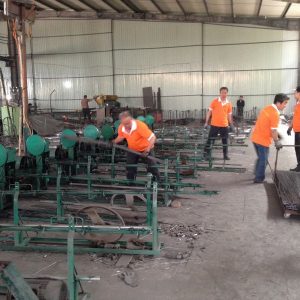Chickens have the habit of feeding on insects, green vegetables and grass seeds. There are many insects and grass seeds in barren mountains. Because insects are rich in protein, they can reduce the input of feed. The air in barren mountains is fresh, less polluted, and the active area is large. Strong, strong resistance to disease, can reduce the input of medicine, therefore, can greatly reduce the cost of breeding. In recent years, due to the continuous improvement of people’s living standards, people’s demand for original ecological and green food has increased. Therefore, using barren hills to raise chickens has become a new way for farmers to get rich. However, due to the large differences between the rearing methods of free-range chickens and cage-bred chickens, the following issues should be paid attention to when using barren mountains to raise chickens:
1. Reasonable selection of chicken breeds
Try to choose both meat and egg varieties such as local Chaiji or Sanhuang chicken. Not only is it resistant to disease, but the meat and eggs are delicious, of good quality, and sales are good, making it more suitable for stocking.
2. Strengthen safety measures
A protective fence with a height of about 1.5m is set up around the flock of chickens to prevent chickens from getting lost due to eating, and it is also easy to manage.
3. Reasonably construct chicken coops
Build a number of temporary chicken houses on the hillside to avoid wind and rain, as well as to facilitate night rest and supplementary feeding. The chicken house is generally 10-12 chickens/m2, and there should be appropriate lighting equipment in the house. In winter, the chicken house can be enclosed by plastic and straw curtains for heat preservation. The chicken house is best built on a sunny slope to keep the chicken house dry.
4. Reduce stress
The chicks must go from the brooding room to the stocking step by step. Keep warm. Don’t change the feed suddenly to prevent stress and disease. The stocking range should also grow from small to large. In the first few days, you can drink water or feed. Add appropriate amount of vitamin C or multivitamins to reduce the damage caused by stress to the chicken itself.
5. Strengthen disease prevention
Strictly follow the epidemic prevention procedures for epidemic prevention and reasonable deworming. Generally, the first deworming is carried out every 20-30 days after stocking, and the second deworming every 20-30 days. Try to use non-toxic and residue-free Chinese herbal repellents.
6. Pay attention to disinfection
After a batch of chickens are released for slaughter, clean the excrement of the chickens in the temporary chicken house and the place where the chicken activities are concentrated, and then use 2-3% caustic soda water for disinfection, and use 2% batox for the utensils used for raising chickens. Kill cleaning and disinfection.
7. Scientific Management
The scale of breeding is determined according to the vegetation conditions of the barren hills and the level of breeding. It is about 2000 animals per group, and the stocking density is 100/667m2. If the vegetation is dense, the stocking amount can be increased appropriately.
8. Chicken in and out time
The best time to sell a batch of chickens depends on the specific conditions of the chickens. Generally, chickens are brought in when the temperature rises from March to May, and after 4 or 5 months of stocking, the eliminated hens and roosters can be sold on the market.

